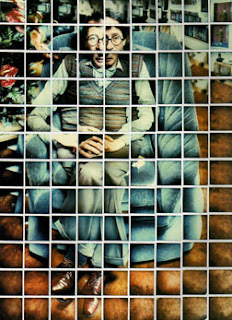Cubism, the first Style of Abstract Art developed in the early 20th Century.
Where did it all begin,
text books cite Picasso's Les Demoiselles D'Avignon (1907) as the first cubist painting while others argue that Georges Braques Series of L'Estaque Landscapes (1905) as being the first cubist paintings.
| Pablo Picasso 'Les Demoiselles D'Avignon' |
| Georges Braque ' Viaduct at L'Estaque' (1908) |
Cubism Joiners and Multiple Viewpoints in Photography.
We see the world in multiple viewpoints that our mind pieces together.
English born painter and photographer David Hockney has tried to create this effect in his work using joiners. Joiners allow the viewer to read space. In the images below Hockney has tried to show how we see and depict space and time.
 |
| David Hockney |
| David Hockney |
Sometimes Hockney lay his images in a grid (seen above) and other times he used overlapping of smaller fragments of a scene as seen below.
Japanese photographer Sohei Nishino also uses this joining method but on a much larger scale.
His series diorama maps are created from thousands of images.
Nishino walks around his chosen city on foot and shoots from various locations with film. He then painstakingly puts the image together by arranging and pasting together the individual shots.
I love cubism and its abandonment of the traditional rules of perspective. I love the use of flattened geometric shapes that represent the subject in an abstract manner, allowing for our imagination to ramble while at the same time giving a sense of place and time.
 |
| Angie Finn |
No comments:
Post a Comment